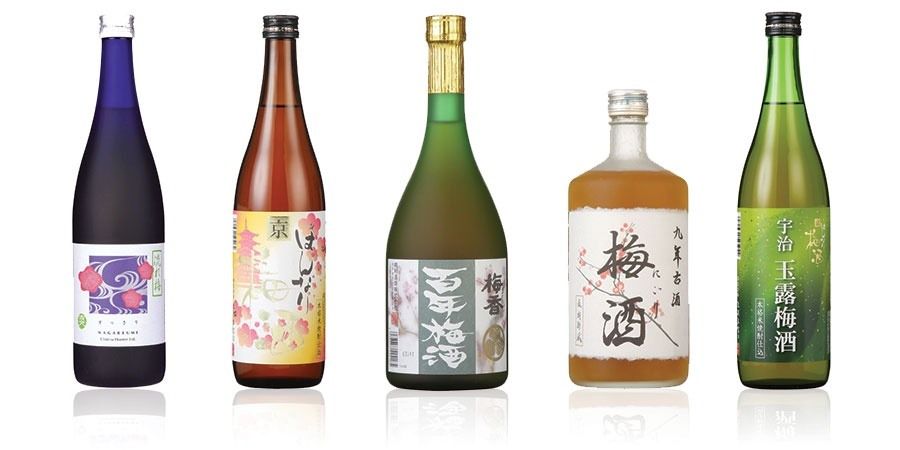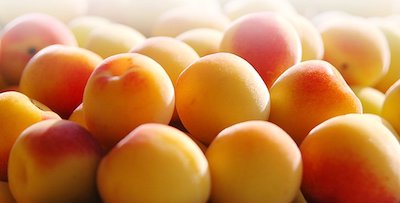Japanese Plum Wine : Sweet and Savory Flavors of Japan
Japanese Plum Wine, also known as Umeshu, is a traditional Japanese beverage made from ume fruit, which is similar to a plum. This sweet and tangy wine is a beloved beverage in Japan, and its popularity has spread worldwide.
The history of Japanese Plum Wine dates back to the 8th century, during the Nara period in Japan. At that time, the wine was mainly produced by Buddhist monks, who used it for medicinal purposes. It was believed that the wine had the power to ward off evil spirits, cure diseases, and promote longevity.

Over time, the popularity of Plum Wine Japanese grew, and it became a popular drink among the Japanese people. It was consumed during celebrations and special occasions, such as weddings and festivals. Today, Japanese Plum Wine is enjoyed by people of all ages, and it is considered to be an essential part of Japanese culture.
The cultural significance of Japanese Plum Wine extends beyond its traditional use as a beverage. The ume fruit, which is used to make the wine, has a symbolic meaning in Japanese culture. It is often associated with perseverance, strength, and resilience. In addition, the delicate flowers of the ume tree are a symbol of spring and renewal, and they are often used in Japanese art and literature.
The Making of Japanese Plum Wine
Ingredients

The primary ingredient for Japanese Plum Wine is ume fruit, which is similar to a plum but has a sour taste. Other ingredients include sugar, water, and alcohol. Some variations of Plum Wine may also include herbs and spices for added flavor.
Fermentation process
The fermentation process for Japanese Plum Wines typically takes several months. First, the ume fruit is washed and soaked in water to remove any impurities. The fruit is then placed in a jar or container, along with sugar and alcohol. The mixture is left to ferment for several months, during which time the sugar and alcohol help to preserve the fruit and develop its unique flavor.
Aging process
After the fermentation process is complete, the Japanese Plum Wine is aged for several more months to allow the flavors to fully develop. Traditionally, Japanese Plum Wine was aged in ceramic or wooden barrels, which added to the flavor and aroma of the wine. Today, modern techniques use stainless steel tanks for aging, which allows for greater control over the aging process.
Traditional methods
In the past, Japanese Plum Wine was typically made at home by families and communities. The fermentation and aging process were done in ceramic or wooden barrels, and the wine was typically enjoyed as a homemade beverage. Today, traditional methods of making Plum Wine Japanese are still used by some producers, but most commercial brands use modern techniques to produce the wine on a larger scale.
Modern techniques
Modern techniques for making Japanese Plum Wines involve greater control over the fermentation and aging process. Stainless steel tanks are used to ferment and age the wine, and temperature and humidity are carefully monitored to ensure consistent flavor and quality. Additionally, some modern producers use innovative techniques, such as vacuum distillation, to produce a higher quality and more consistent product.
Varieties of Japanese Plum Wine
When it comes to Japanese Plum Wine, also known as umeshu, there are two main types: sweet and dry. Both of these types offer unique flavor profiles that make them a popular beverage in Japan and around the world.
Sweet Plum Wine
Sweet plum wine is made by steeping Japanese plums in sugar, which results in a rich and fruity taste. This type of plum wine is often enjoyed as a dessert wine or paired with cheese and fruit. Some popular brands of sweet plum wine include:
Choya
Choya is a popular brand of Japanese Plum Wine that offers a range of flavors, including classic, honey, and yuzu. The classic flavor is made with high-quality Japanese plums and sugar, resulting in a rich and fruity taste that is both sweet and tangy. The honey flavor is made by adding honey to the classic flavor, which results in a sweeter taste that is perfect for pairing with desserts. The yuzu flavor is made with yuzu fruit, which gives the plum wine a unique and refreshing citrus taste.
Takara
Takara is another well-known brand of Japanese Plum Wine that offers both sweet and dry varieties. Their sweet plum wine has a rich and fruity taste that is perfect for pairing with cheese and fruit. The dry plum wine, on the other hand, has a drier and more complex flavor profile that is often enjoyed as an aperitif.
Kikkoman
Kikkoman is a popular brand that produces a sweet Japanese Plum Wine that is made with high-quality plums and sugar. It has a rich and fruity taste that is perfect for pairing with desserts or enjoyed as an after-dinner drink. Kikkoman also offers a low-alcohol version of their plum wine that is perfect for those who prefer a lighter taste.
Dry Plum Wine
Dry plum wine is made by fermenting Japanese plums for a longer period of time and using less sugar. This results in a drier and more complex flavor profile that is often enjoyed as an aperitif. Some popular brands of dry plum wine include:
Kanjuku
Kanjuku is a popular brand of dry Japanese Plum Wine that is known for its smooth and delicate taste. Made by fermenting Japanese plums for a longer period of time with less sugar, this plum wine has a drier taste that is perfect for pairing with savory dishes or enjoyed as an aperitif.
Umenoyado
Umenoyado produces a dry Japanese Plum Wine that has a crisp and refreshing taste. It is made with high-quality plums and fermented for a longer period of time, resulting in a drier taste that is perfect for pairing with sushi or other seafood dishes.
Gekkeikan
Gekkeikan is a well-known brand that produces a dry Japanese Plum Wine that has a subtle sweetness and a complex flavor profile. Made with high-quality plums and fermented for a longer period of time, this plum wine has a drier taste that is perfect for pairing with spicy dishes or enjoyed as an aperitif.
Other Varieties
In addition to sweet and dry plum wine, there are also other varieties that are worth exploring. For example:
Nanko-ume
Nanko-ume is a type of Japanese plum that is known for its large size and sweet taste. Plum wine made with Nanko-ume plums has a unique and fruity flavor that is worth trying.
Shiso Plum Wine
Shiso plum wine is made by adding shiso leaves to the plum wine during the fermentation process. This gives the wine a unique herbal flavor that is both refreshing and complex.
Japanese Plum Wine with food pairing
Japanese Plum Wine is a unique and flavorful beverage that can be enjoyed on its own or paired with food. Its rich and fruity taste makes it a versatile drink that pairs well with a variety of dishes. In this article, we will explore the different food pairings that go well with Japanese Plum Wine.
Sweet Japanese Plum Wine Pairings
Sweet Japanese Plum Wine has a rich and fruity taste that pairs well with desserts, such as cheesecake, chocolate cake, and fruit tarts. Its sweetness also makes it a great complement to spicy or savory dishes, such as Thai curries, grilled meats, and spicy tuna rolls. Sweet plum wine can also be enjoyed with cheese, such as brie or blue cheese.
Dry Japanese Plum Wine Pairings
Dry Japanese Plum Wine has a drier and more complex taste that pairs well with light and refreshing dishes, such as sushi, sashimi, and seafood salads. Its crisp and clean taste also makes it a great complement to spicy or salty dishes, such as Korean fried chicken, edamame, or salted nuts. Dry plum wine can also be enjoyed with light cheeses, such as goat cheese or feta.
Nanko-ume Plum Wine Pairings
Nanko-ume Plum Wine is a variety of Japanese Plum Wine made with Nanko-ume plums, which have a high sugar content and a rich and fruity taste. This type of plum wine pairs well with sweet and fruity desserts, such as fruit salads, berry pies, and sorbets. It can also be enjoyed with light and refreshing dishes, such as grilled vegetables or sushi.
Shiso Plum Wine Pairings
Shiso Plum Wine is a unique variety of Japanese Plum Wine made with shiso leaves, which give it a refreshing and herbaceous taste. This type of plum wine pairs well with light and refreshing dishes, such as salads, sushi, and seafood dishes. It can also be enjoyed with spicy or savory dishes, such as Korean barbecue or Thai curry.
When pairing Japanese Plum Wine with food, it is important to consider the balance of flavors and textures. Sweet plum wine pairs well with rich and spicy dishes, while dry plum wine pairs well with light and refreshing dishes. It is also important to consider the temperature and serving style of the plum wine, as well as the serving size and glassware.
Serving Japanese Plum Wine
Japanese Plum Wine, is a delicious and versatile drink that can be enjoyed in many ways. Whether you’re serving it to guests or enjoying a glass on your own, it’s important to know the proper way to serve and store it to ensure the best taste and experience. Here are some suggestions for serving and storing Japanese Plum Wine.
Storing Japanese Plum
Wine Japanese Plum Wine should be stored in a cool, dark place, away from direct sunlight and heat sources. It should be stored upright to prevent the cork from drying out, which could cause air to seep into the bottle and spoil the wine. Once opened, it should be kept in the refrigerator and consumed within a few weeks to ensure freshness and optimal taste.
Serving Japanese Plum Wine
Japanese Plum Wine can be served chilled, on the rocks, or mixed with other drinks to create cocktails. It is typically served in small, elegant glasses, such as a traditional ochoko or a wine glass. The proper temperature for serving Japanese Plum Wine is typically around 10-15 degrees Celsius (50-59 degrees Fahrenheit), which allows the flavors and aromas to fully develop.
Glassware for Japanese Plum Wine
When serving Japanese Plum Wine, it’s important to use the right glassware to enhance the drinking experience. Traditional ochoko cups are small, ceramic cups that are ideal for serving plum wine. These cups are designed to hold a small amount of liquid and have a wide, open mouth that allows the aroma to fully develop. Wine glasses are also a good choice for serving Japanese Plum Wine, as they allow for a more expansive aroma and fuller flavor.
Conclusion
Plum Wine Japanese has been enjoyed for centuries in Japan and around the world. With its sweet, fruity flavor and versatile pairing options, plum wine is a great choice for anyone looking to explore new flavors and expand their palate.
From sweet to dry, there are many different varieties and brands of Japanese Plum Wine to choose from. Each one has its own distinct flavor profile and pairing potential, making it worth trying different types to find the one that suits your taste.
When it comes to serving and enjoying Japanese Plum Wine, there are many options available. Whether you prefer it chilled or on the rocks, paired with a sweet dessert or a savory dish, plum wine is a versatile drink that can be enjoyed in many ways.
So if you’re looking for a new and exciting drink to try, why not give Japanese Plum Wine a chance? With its unique flavor and versatility, it’s a great way to explore new tastes and expand your culinary horizons. Try different brands and types of Japanese Plum Wine and see what you like best – you may be surprised at the variety of tastes and pairings available. Cheers!





Pingback: Chinese Cooking Wine: Unlock the Flavors of Chinese Cuisine